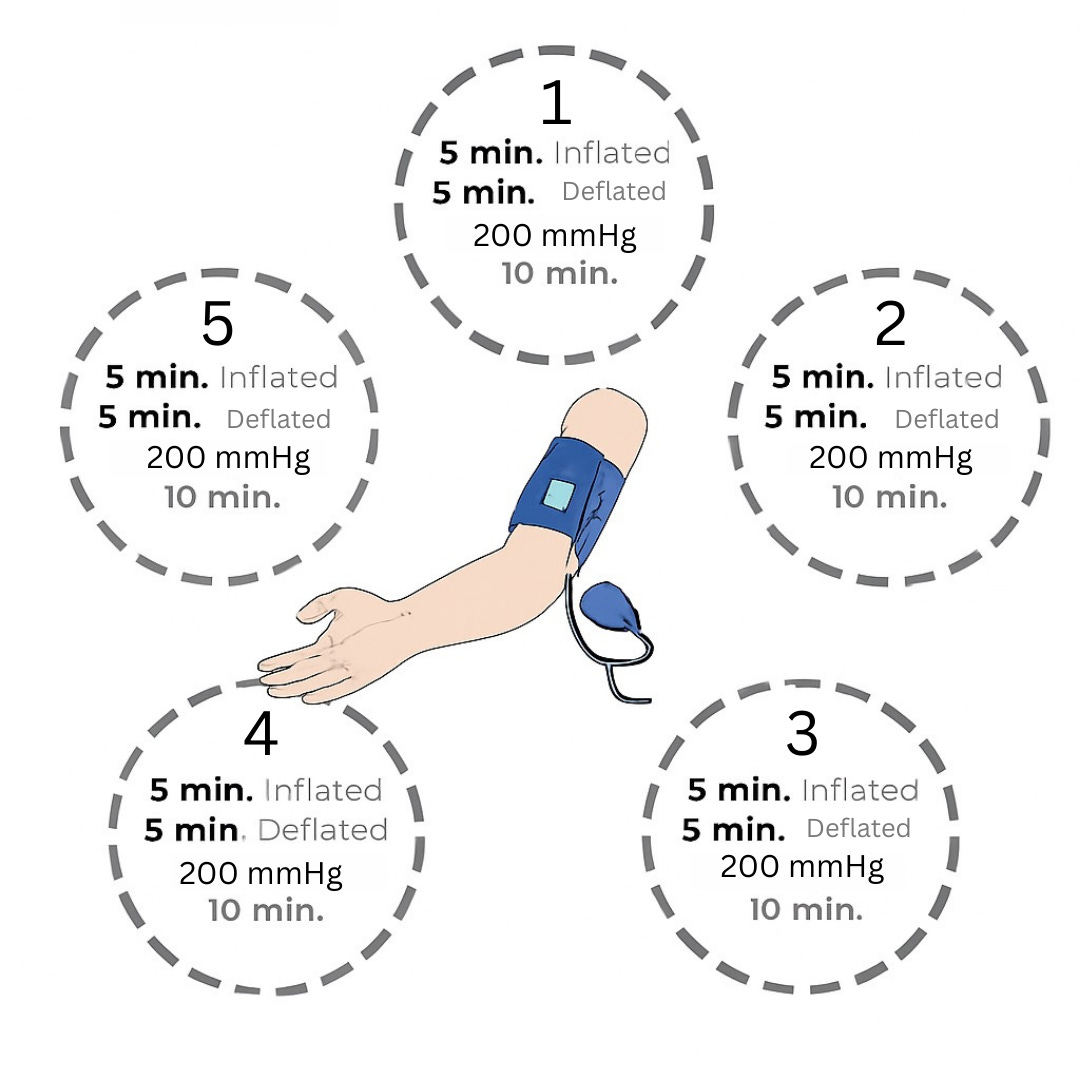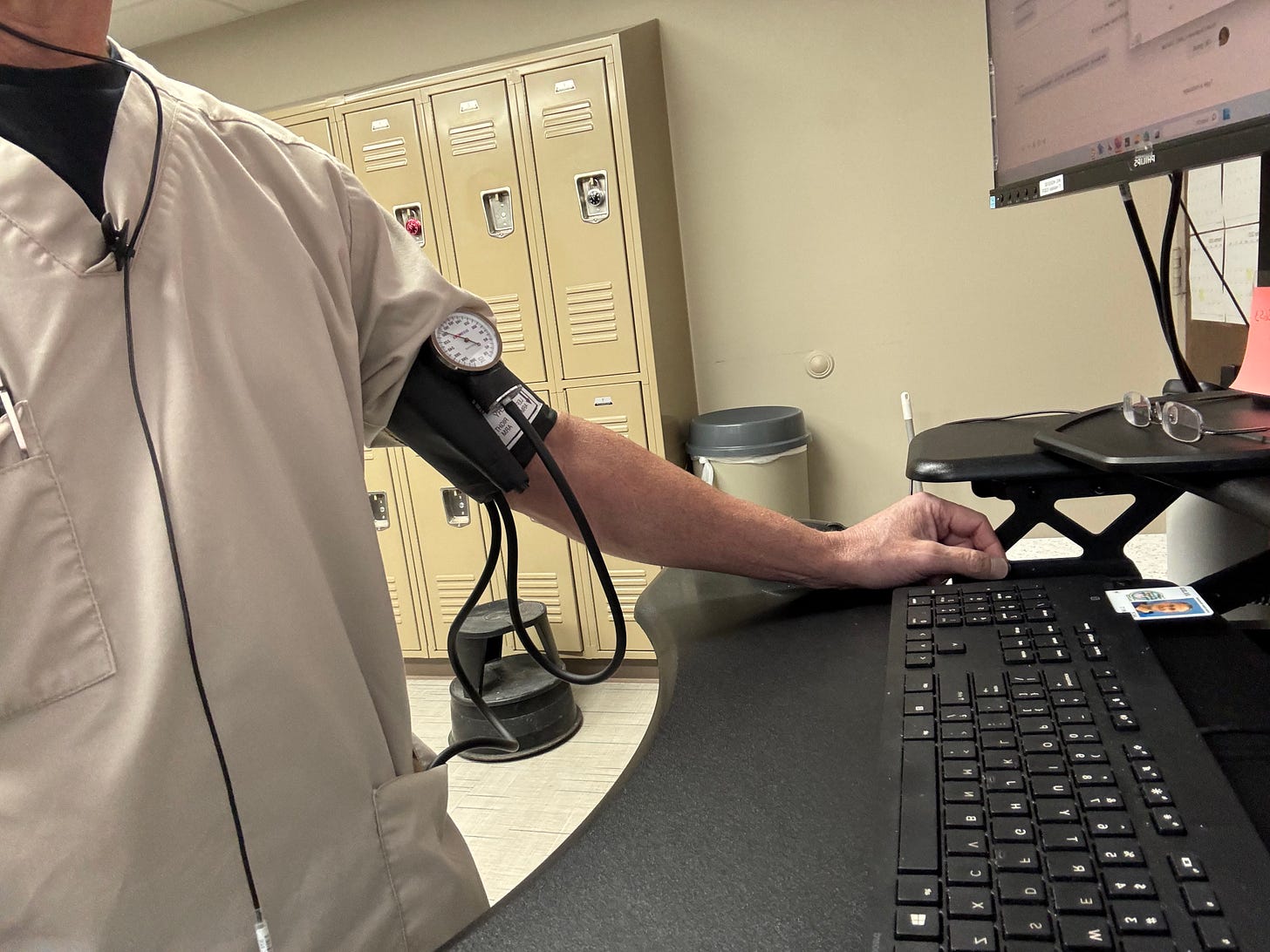The Perfect Home Protocol for Remote Ischemic Conditioning (RIC)
Activate Your Body’s Pharmacy For Resilience, Restoration, Strength, and Lasting Wellbeing
Note: This is for educational purposes. This is not medical advice, and I am not telling you what you should do. Every person is or should be in control of their own health in spite of what the current medical establishment would like you to believe.
In the first article of this series, we explored the surprising power hidden within one of medicine’s simplest and most overlooked therapies. By activating your body’s own pharmacy of healing biochemicals, remote ischemic conditioning was revealed as a science-backed method for boosting resilience, supporting restoration, and fortifying both cardiovascular and neurological health. You don’t need expensive products, clinic visits, or strenuous effort. We discussed how this technique, although largely ignored by many in medicine and biohacking, offers profound benefits for anyone seeking long-term wellness, faster healing, and greater vigor in everyday life.
Now, it is time to bridge the gap from theory to daily practice. In this article, you will discover exactly how to implement a remote ischemic conditioning regimen from home, using a precise protocol grounded in the latest clinical research. This is not just another fleeting wellness trend. It is a transformative, evidence-based approach that you can begin today with no prescriptions, no pricey gadgets, and no hassle. If you are ready to take control of your health and unlock the full potential of this remarkable and accessible strategy, keep reading for a clear guide to the perfect home protocol that could reshape your well-being for years to come.
My Evidence Based Remote Ischemic Conditioning Protocol
Step 1: Place a blood pressure cuff (manual or automatic) securely around your upper arm.
Step 2: Inflate the cuff to a pressure of at least 200 mmHg (or 50 mmHg above your systolic blood pressure) to fully restrict blood flow. You’ll feel the arm get tight, similar to during a doctor’s regular blood pressure check.
Step 3: After five minutes, deflate the cuff completely and leave it off for another five minutes to allow blood flow to return.
Step 4: Repeat this process for a total of five sets (inflation for five minutes, release for five minutes per set).
Step 5: After completing all five rounds, remove the cuff.
You can perform this protocol on either arm, alternating arms each day. The arm is used due to ease and comfort. Studies have been performed on the leg and either arm or leg has provided similar outcomes in clinical studies. [1, 2, 3, 4, 5, 6]
Core Regimen
5 sets
5 minute sessions
5 minute break between each set
Cuff Pressure 200 mmHg
Handy Tips
Check the pressure gauge frequently: Manual cuffs may lose pressure during the inflation period, so recheck and adjust to maintain at least 200 mmHg.
If desired, record your session: Keep a log of your cuff pressures and any sensations for each session.
Schedule your protocol: Try to do your session at the same time each day. I often perform remote ischemic conditioning while working at my desk during my work day
Hydrate well: Drink water before and after your protocol, as hydration supports good blood flow
Precautions and Safety
RIC is generally very safe, but some precautions are important:
Do not perform RIC if you have known peripheral vascular disease, history of blood clots, deep vein thrombosis, severe hypertension, severe cardiovascular disease affecting your limbs, or poor limb sensation. [3]
Alternate arms on a daily basis.
You might feel discomfort or tingling during inflation, but pain should not be severe.
Pause or stop if you feel severe pain, dizziness, or if your skin shows petechiae (small red dots), which could indicate increased pressure. Very mild petechiae seen after the procedure is not abnormal. (See the image below as an example of what normal might look like.)
Do not use the protocol on both arms at the same time.
Children, frail elderly, or those with bleeding disorders should not use RIC at home without medical supervision.
Check your skin: Avoid RIC if you have infections, swelling, or skin issues on your arm where you place the cuff.
Other Pertinent Information
Standardized protocols recommend four to five cycles, but some clinical trials have safely used up to ten cycles in a session. Most benefits, however, are seen with four to five rounds. [1]
Long-term safety and compliance: Studies show protocols are usually well tolerated for long periods, but side effects like skin petechiae can occur in a minority of users. [3]
The sensation of cuff inflation at 200 mmHg can be uncomfortable. If you are new to this process, start with fewer cycles and work up as you adapt. [2]
References
1. Alhashimi A, Kamarova M, Baig SS, Nair KPS, Wang T, Redgrave J, Majid A, Ali AN. Remote ischaemic conditioning for neurological disorders-a systematic review and narrative synthesis. Syst Rev. 2024 Dec 19;13(1):308. https://pmc.ncbi.nlm.nih.gov/articles/PMC11657452/
2. Wikipedia contributors. (2025, August 24). Remote ischemic conditioning. In Wikipedia. Retrieved August 24, 2025, from https://en.wikipedia.org/wiki/Remote_ischemic_conditioning
3. Meng, R., Ding, Y., Asmaro, K., Brogan, D., Meng, L., Sui, M., Sun, Z., Ji, X., & Lo, E. H. (2021). Remote ischaemic conditioning for stroke: Clinical data and experimental concepts. Frontiers in Neurology, 12, 825805. https://pmc.ncbi.nlm.nih.gov/articles/PMC8258051/
4. Eltzschig, H. K., Yellon, D. M., & Hausenloy, D. J. (2023). Remote ischaemic conditioning for fatigue after stroke (RICFAST). Neurorehabilitation and Neural Repair, 37(1), 3–14. https://www.sciencedirect.com/science/article/pii/S1052305723004433
5. Resilience H2020. (n.d.). The therapy. Retrieved August 24, 2025, from https://resilience-h2020.com/the-project/the-therapy/
6. Zhao, W., Lei, C., & Liu, L. (2022). Remote ischemic conditioning for acute ischemic stroke part 2: Clinical evidence and potential mechanisms. Frontiers in Neurology, 13, 946431. https://www.frontiersin.org/journals/neurology/articles/10.3389/fneur.2022.946431/full





Nice! Something we can do at home that doesn't cost an arm and a leg, nor scary risks (for the majority).
Have there been any reports of blood clots forming from stopping blood flow?